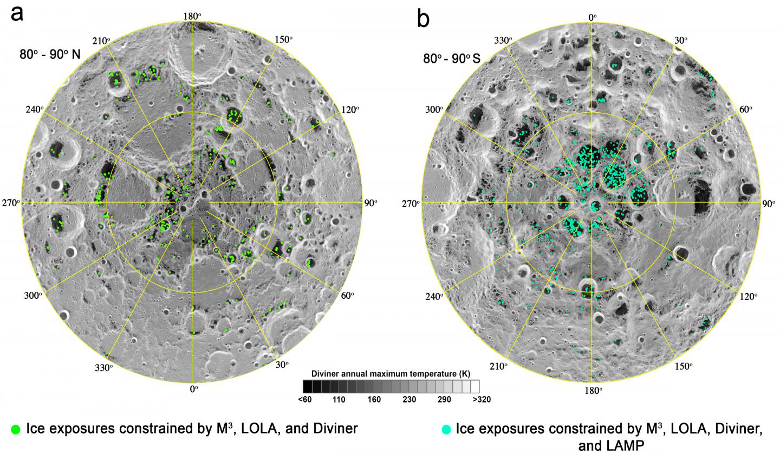It’s presence has been indirectly suggested many times, but now the first direct evidence for surface exposed water ice in the permanently shaded regions of the Moon has finally been found by a team of scientists in Hawaii.
The discovery has been made by data acquired by the Moon Mineralogy Mapper (M3) onboard India's Chandrayaan-1 mission launched in 2008.
In the past, both the Chandrayaan-1 spacecraft and NASA’s Lunar Reconnaissance Orbiter (LRO) detected signatures that were interpreted as water reflected from the Moon's surface, but it was not direct evidence and other phenomena such as unusually reflective lunar soil could be used to explain the observations.
Now, after comparing absorption features in the M3 data with those of pure water ice measured in the laboratory, the team, led by researchers from the University of Hawai'i at Mānoa School of Ocean and Earth Science and Technology (SOEST), have been able to conclusively identify three specific signatures that definitively prove there is water ice at the lunar surface.
"This was a really surprising finding," said lead author Shuai Li, a postdoctoral researcher at SOEST. "While I was interested to see what I could find in the M3 data from PSRs, I did not have any hope to see ice features when I started this project. I was astounded when I looked closer and found such meaningful spectral features in the measurements."
The spectral signatures are particularly difficult to analyse as usually the mapper measures reflected light from the illuminated regions on the Moon. In the cold, dark depths of the permanently shadowed regions, where the warmest temperatures never reach above minus 120 degrees celsius, no direct sunlight is reflected so M3 can only measure scattered light in those areas.
To add to the difficulties, as the Moon does not have an atmosphere, any light that does bounce off the lunar surface is scattered very weakly, so the signal recorded by the mapper is also very weak. Despite this, enough of a signature was captured for the research team to work with.
"We found that the distribution of ice on the lunar surface is very patchy, which is very different from other planetary bodies such as Mercury and Ceres where the ice is relatively pure and abundant," added Li. “The spectral features of our detected ice suggest that they were formed by slow condensation from a vapour phase either due to impact or water migration from space.
Compared with other planetary bodies in the Solar System, the patchy distribution and smaller abundance of ice on the Moon suggests that the delivery, formation, and retention processes for our lunar neighbour are very unique remarked Paul Lucey, professor at HIGP and co-author on the study.
With many now taking a vested interest in returning to the moon, this discovery bodes well for any organisation hoping to establish a lunar base in the next few decades.
"A future Moon mission is needed to examine the whole lunar PSRs to map out all water ices and understand the processes which led to water on the Moon. This work provides a roadmap for future exploration of the Moon, particularly the potential of water ice as a resource,” said Li.











